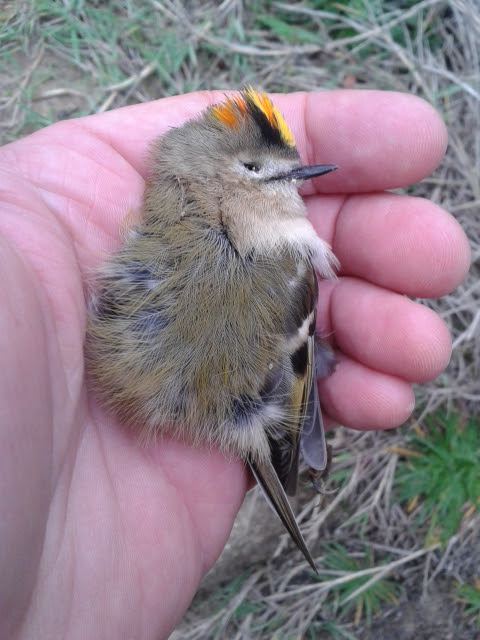 |
| One of many hundreds of Goldcrests which made it safe and sound into the Observatory area this week |
It's been a while, I know, but the usual excuses - prioritising the Observatory website, working towards the degree, maximising time in the field, etcetera - apply more than ever, and in truth it's been pretty hard going for much of the last few weeks anyhow. But still, it is October, which means there are always constantly dumbfounding aspects of migration to marvel at, and it doesn't get much more magical than the mass arrival of Goldcrests.
 |
| This bird landed next to me at the base of the rocky slope on the Brigg, glanced up at me briefly, and immediately went to sleep..... |
Recent weeks have seen a steady turnover of birds arriving here in the Filey area, with several hundred on peak days, many of which soon find the insect-rich safe havens of our coastal woodland and scrub, to rest and feed up within after arduous and high-risk sea crossings. However, such a tiny bird (Europe's smallest species, barely bigger than your thumb) burns energy reserves particularly quickly, and if the journey is especially punishing, they can ill afford to waste the last of their reserves as they finally approach dry land...
 |
| ... while this one was found, sadly freshly dead, in the same area the day before. |
Hence, when such arrivals take place, we get to witness the bittersweet phenomenon of Goldcrests battling towards our shores and pitching down just as soon as they can, in the far from ideal settings of clifftops, coastal slopes and even on the Brigg itself. For a bird that weighs barely more than a twenty pence piece, the impacts of such a journey are impossible to imagine, but then, that's migration in all its harsh reality; it simply wouldn't happen if it wasn't worth it, with migratory strategies constantly evolving as and when - which can be over many thousands of years, or over just a few generations. Magical indeed.